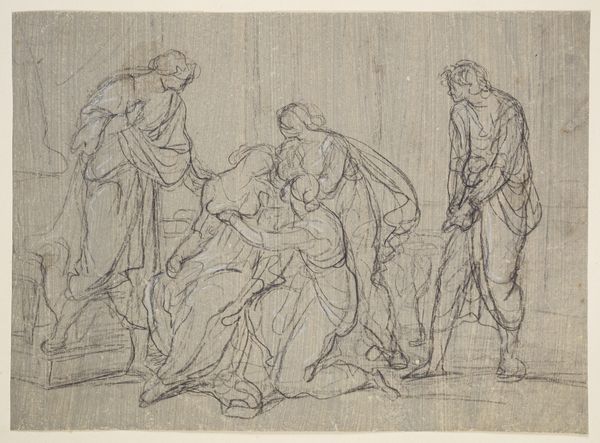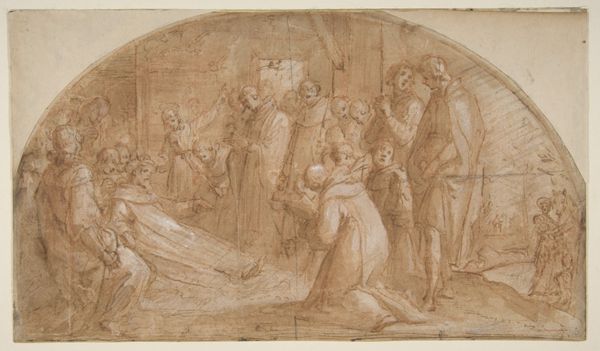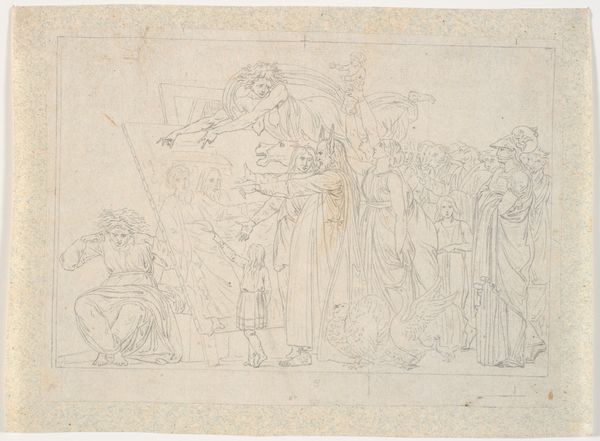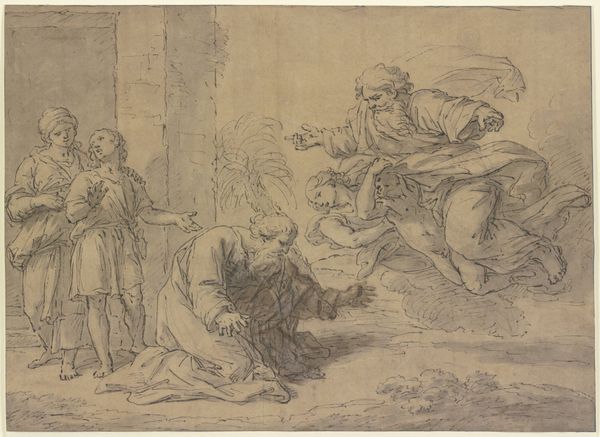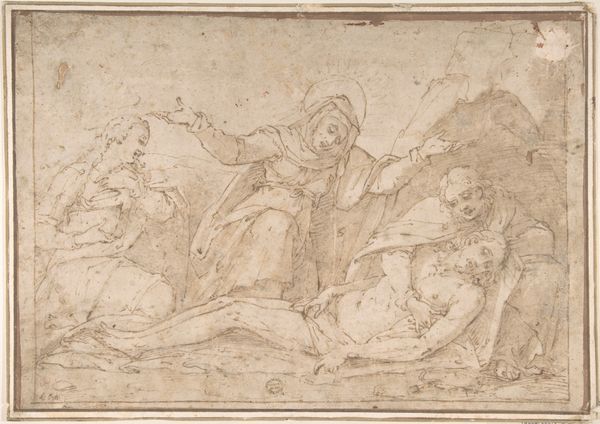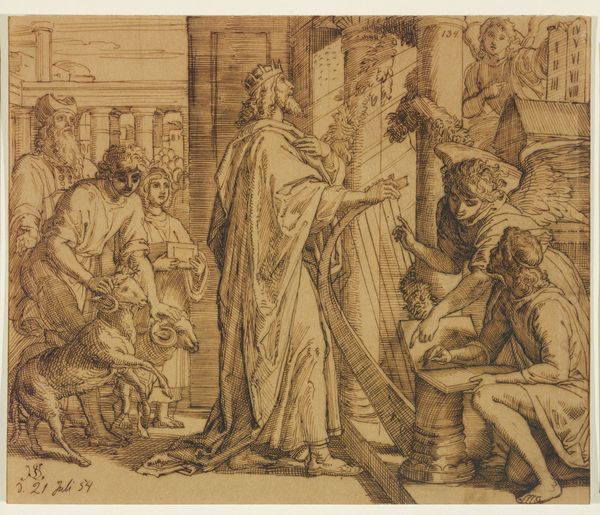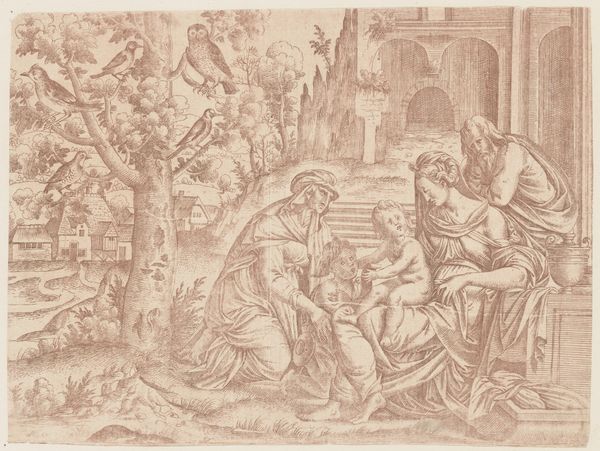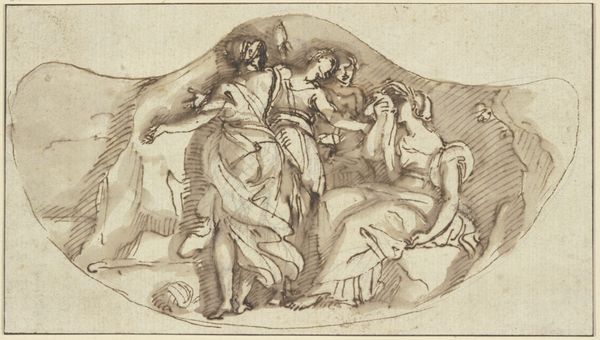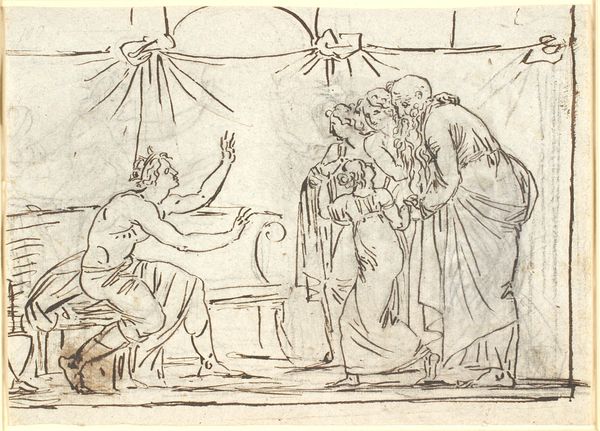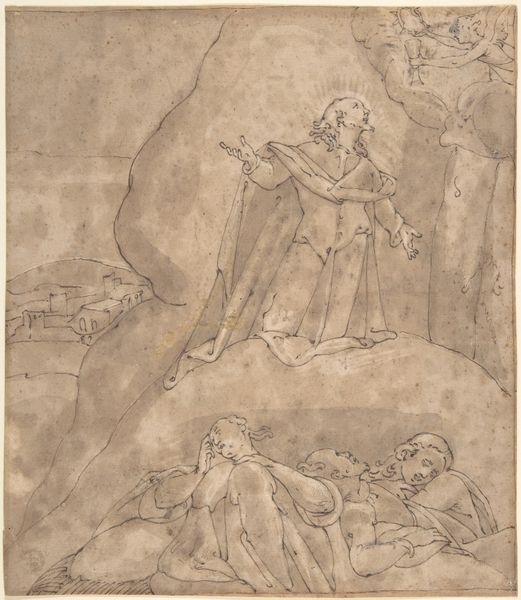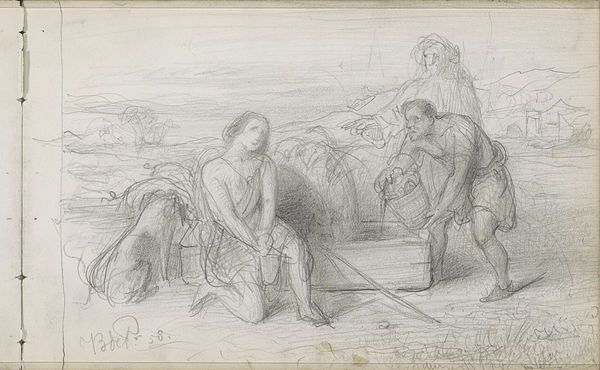
drawing, print, ink, pencil
#
drawing
#
neoclacissism
# print
#
landscape
#
figuration
#
ink
#
pencil
#
history-painting
Dimensions: sheet: 10 3/16 x 13 1/2 in. (25.8 x 34.3 cm)
Copyright: Public Domain
Curator: Here we have Henry Fuseli's "Oedipus at Colonus, Cursing his Son Polynices," executed in 1777 using pencil and ink. The scene feels intensely dramatic, wouldn’t you agree? Editor: Absolutely. There's a powerful sense of contained fury radiating from the central figure, even within the precise lines. The stark contrasts certainly amplify that. The composition really emphasizes a raw emotive exchange in that instant. Curator: Indeed. The way Fuseli employs the stark line work adheres perfectly to neoclassical ideals, emphasizing contour and form over elaborate detailing. See how the architecture in the background suggests a timeless, almost stage-like setting. It directs our reading of familial curses echoing through Greek tragedies. Editor: Looking at Oedipus, you can almost feel the weight of destiny bearing down on him. The symbolism here is potent— the aged king, cloaked and burdened, reaching out with what seems like vengeful intent to reject his son. And just beneath the surface of rejection we see symbols and indicators that the familial role and bloodlines were paramount cultural factors that contributed to meaning and self worth. The image suggests he's actively severing their familial bond and fate. Curator: Note how the daughters are arranged within the visual frame; one is supporting him, almost bracing for the outburst, while the other retreats into herself. Functionally, the contrasting emotional responses on either side creates balance while emphasizing the scene’s internal tension. Fuseli masters neoclassical artistic language to showcase emotional discord. Editor: The twisted staff on the ground takes on the air of one abandoned: now it’s the crutch of Oedipus, but then again it might just be another scepter of the crown he had to forfeit after fulfilling his horrific and fateful destiny. One cannot avoid pondering on cycles of fate when studying this piece. It makes the entire work thrum with meaning about guilt, expiation, power, and the burden of knowledge. Curator: It is a very impressive synthesis between visual form and thematic depth. The image leaves you in silent meditation on family relations and power. Editor: The composition captures how myths are retold generation after generation through different mediums and how relevant Oedipus' plight still is in relation to morality and society. A reminder that classical dramas continue to inspire intense emotions centuries later!
Comments
No comments
Be the first to comment and join the conversation on the ultimate creative platform.
